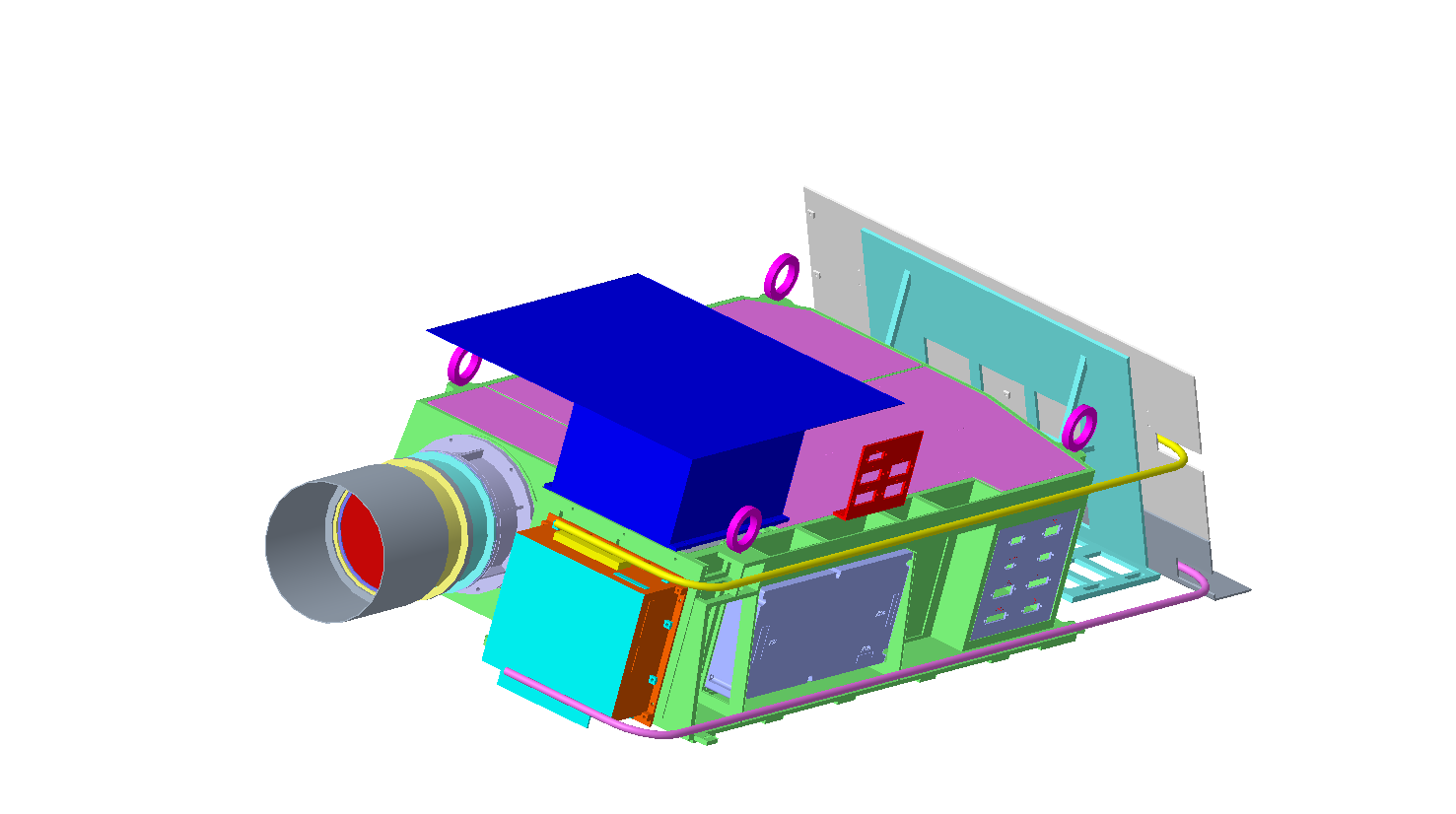Instruments
The proposed ASO-S mission has three payloads onboard, i.e., the Full-disk Vector MagnetoGraph, the Lyman-alpha Solar Telescope and the Hard X-ray Imager.

The Full-disk vector MagnetoGraph (FMG) measures the magnetic fields of the photosphere over the entire solar disk. FMG consists of an imaging optical system, a polarization optical system, and an image acquisition and processing system. The telescope is a telecentric optical design with 140 mm aperture, and the detector is a CMOS camera with 4k by 4k array and 16 fps. The polarization optical system consists of a traditional Lyot-type birefringent and innovational LCVR-type polarimeter. The birefringent filter works in the Fraunhofer line Fe I 532.4 nm with FWHM 0.011 nm.
In order to get higher accuracy, FMG uses multi-frame add mode (deep-integration mode). In normal mode of observation, 256 frames (half for left and half for right) will be collected for one magnetogram. That means within 32s (for obtaining 256 frames) the pointing should be stabilized at least within half pixel, say 0.25". Thus, FMG has itself tip/tilt system. In deep-integration mode, the sensitivities are 5G and 150G for longitudinal and transverse component, respectively.
Compared with the Hinode/SP, a famous payload for the measurement of solar magnetic field, FMG has a much larger field of view and higher time cadence. Comparing to the magnetographs onboard SDO/HMI and SOHO/MDI, FMG has a simpler observation mode and a higher measurement precision.

The Lyman-alpha Solar Telescope (LST) is composed of a Solar Disk Imager (SDI) with an aperture of 60 mm, a Solar Corona Imager (SCI) also with an aperture of 60 mm, a White-light Solar Telescope (WST) with an aperture of 130mm, and two Guide Telescopes (GTs).
The SDI is to image the Sun from the disk center to 1.2 solar radii in the Lyman–alpha waveband (121.6±4.5 nm) with a cadence of 4 – 40 s. The SDI uses a 4608 by 4608 camera as the detector so as to guarantee the resolution of 1.2". A piezoelectric image stabilization system is adopted for both the SDI and the SCI to achieve the high spatial resolution.
The SCI uses a 2048 by 2048 camera to image the inner solar corona from 1.1 to 2.5 solar radii with a cadence of 3 – 60 s in both the Lyman-alpha waveband (122.6±3 nm) and white-light (700±32 nm). A beam-splitter divides the coming coronal light into two beams: the reflected beam feeds the Lyman-alpha channel while the transmitted beam feeds the white-light channel. The Lyman-alpha channel consists of a Lyman-alpha filter and a detector; the white-light channel consists of a broadband filter centered at 700 nm, linear polarizers and a detector. Three linear polarizer orientations (0, ±60°) are used to conduct the polarization measurement in the white-light waveband.
The WST is designed to image the Sun in violet narrow-band continuum (360±2.0 nm) from the disk center to 1.2 solar radii with a cadence of 1 – 120 s (it can be as high as 0.2 s in the burst mode). A 4608 by 4608 CMOS sensor is selected to be the detector, which allows a windowed observation mode with higher time cadence in the burst mode.
The guide telescopes work in 570 nm waveband. To guide, quadrant photodiode detectors are used to monitor the solar limb, calculate the displacement and produce the guiding signal, which is converted to triggering signals to the PZT actuators installed behind the main mirrors of both SCI and SDI. The GTs together with the PZT actuators and relevant electronics forms the image stabilizing system.

The Hard X-ray Imager (HXI) aims to image solar flares in hard X-rays from ~15-300 keV with an angular resolution of 3.1 arcseconds, field of view of 40 arcminutes, energy resolution (22% @ 32 keV), high time cadence (as high as 0.125 s). Since ASO-S has two other optical payloads, HXI adopts the similar principle used by the Hard X-ray Telescope (HXT) onboard the Japanese YOHKOH satellite and the Spectrometer Telescope for Imaging X-rays (STIX) for the Solar Orbiter mission, i.e., using indirect imaging technique via spatial modulation. This is different from the Reuven Ramaty High Energy Solar Spectroscopic Imager (RHESSI) that images the Sun with the indirect imaging technique via rotational modulation.
HXI is a high-precision imaging instrument. We made in total over 3400 slices of tungsten grid layers, which are stacked to produce 91 pairs of tungsten grids. These grids are installed in the front and rear base boards at the ends of the 1.2-meter-long collimator, forming 91 subcollimators. The HXR signals through them are recorded by 91 detectors behind and used to reconstruct images on the ground by several imaging algorithms. Besides, there are three detectors that monitor total fluxes, and another five that monitor the background fluxes. The detector array contains 99 LaBr3 detectors.
A solar aspect system is implemented with HXI to monitor the Sun in white-light, which provides pointing information of HXI with an accuracy better than 0.3 arcsec and locates eruptions on the Sun. The data is also used to correct blurry image caused by the pointing changes. Meanwhile, the SAS also monitors the deformation of the base boards at a level of microns and the relative twist at a level of arcseconds.
